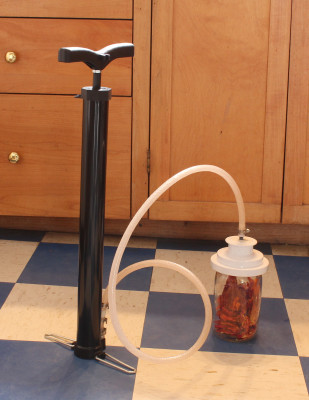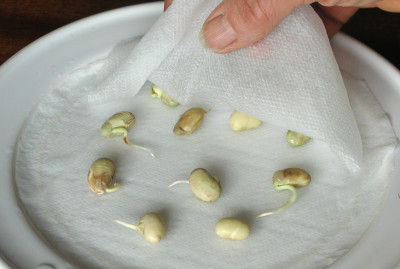TO SAVE OR NOT TO SAVE, & A FREE BOOK!
New Seeds Needed?
“Ring out the old, ring in the new.” But not all the “old,” when it comes to seeds for this year’s garden. I’m flipping through my plastic shoeboxes (I think that’s what the boxes are meant for) of vegetable and flower seeds, assessing what old seeds are worth keeping and what new seeds I need to order.
Seeds are living, albeit in a dormant state, and, as such, have a limited lifespan. The longevity of any seed depends, first of all on the kind of seed, its genetics. Most seed packets come dated; if not, I write the date received on the packet.
Few seeds have as short a viability as parsnips. (No matter to me; I don’t grow them.) More astounding is the longevity of some seeds, especially the current record-holder for longevity, Silene stenophylla seed, possibly 32,000 years old, found buried in a squirrel burrow in the Siberian tundra. At the other end of the spectrum are seeds that remain viable for even less time than parsnip. The record at that end is probably held by seeds in the family Tillandsioideae, related to pineapple, with a viability of 4-6 weeks. Swamp maple, Acer saccharinum, seeds retain their capacity to germinate for only about a week.
It’s not worth the risk to sow parsnip, spinach, or salsify seeds after they are more than one year old. Two years of sowings can be expected from packets of carrot, onion, okra, pepper, and sweet corn seed; three years from peas and beans, radishes, celery, and beets; and four or five years from cabbage, broccoli, brussels sprouts, radish, cucumbers, beet, endive, melons, eggplant, tomato, and lettuce.
Among flower seeds, the shortest-lived are delphiniums, aster, candytuft, and phlox. Packets of alyssum, Shasta daisy, calendula, sweet peas, poppies, and marigold can be re-used for two or three years before their seeds get too old.
Life Extension, for Seeds
As with humans, genetics and lifestyle determine actual longevity, lifestyle, in the case of seeds, being storage conditions. So although onion seeds remain potentially viable for 2 years, I replace the year old, dog-eared seed packets in shoeboxes in my garage with new packets each year.
Conditions that slow biological and chemical reactions also slow aging of seeds, i.e. low temperature, low humidity, and low oxygen. All winter, my seeds find their low temperature and low humidity storage in my garage. Good for seeds. But come summer, my garage becomes warm and humid. Bad for seeds.
If my seed boxes could be kept well sealed, I could eke more sowings from a packet of seeds by lowering the humidity with a packet of silica desiccant.
Reducing oxygen levels has generally not been practical . . . until I came across plans for converting a bicycle pump into a vacuum pump (http://www.instructables.com/id/make-a-manual-vacuum-pump-for-under-$20-by-convert/). Going forward, my plan is to stuff some packets of seed into large-mouthed mason jars, then evacuate them with the reversed bicycle pump plugged into a “FoodSaver Wide-Mouth Jar Sealer.” I’d like to figure out some box I could make, modify, or buy in which I could more conveniently put my seeds, and then evacuate. Any suggestions?
I’ve already tried this on a number of mason jars of dried tomatoes, dried shiitakes, nuts, and beans. The vacuum is not very strong (0.74 atmospheres), but sucking out air also sucks out moisture. Some testing will determine just how it affects seed longevity.
Test It
So I don’t really know how viable my seeds are. One option is to order all new seeds each year. That could be very expensive. Another option is to guesstimate my seeds’ viabilities, taking into account their inherent longevity and storage conditions. That’s my approach, seasoned with yet another option: testing the viability of some of my seeds.

I test viability by counting out 10 to 20 seeds from each packet to be tested, and spreading the seeds between two moist rounds of filter paper on a plate. Enclosing the plate in a plastic bag to hold in moisture, and putting the bagged plate somewhere warm, preferably around 75 degrees, provides just about perfect conditions for germination. (Alternatively, place seeds on a damp paper towel, roll it up, bag it, and put it somewhere warm.)
After one to two weeks, germination occurs — if it is going to. Peeling apart the filter papers (or unrolling the paper towels) lets me count the number of seeds with little white root “tails”.
Seeds with low or no percentage germination got tossed into the compost pile. If the germination percentage isn’t too low, I’ll use the seeds and adjust the sowing rate accordingly.
A Freebie
A book giveaway, a copy of my book GROW FRUIT NATURALLY. Reply to this post telling us, if you grow vegetables, how you maintain soil fertility year after year, and how it’s working, or not, for you. Let us know what state you are in (as in NY, OH, CA, etc., rather than happiness, wistfulness, etc.). I’ll choose a winner randomly from all replies received by January 22nd.



